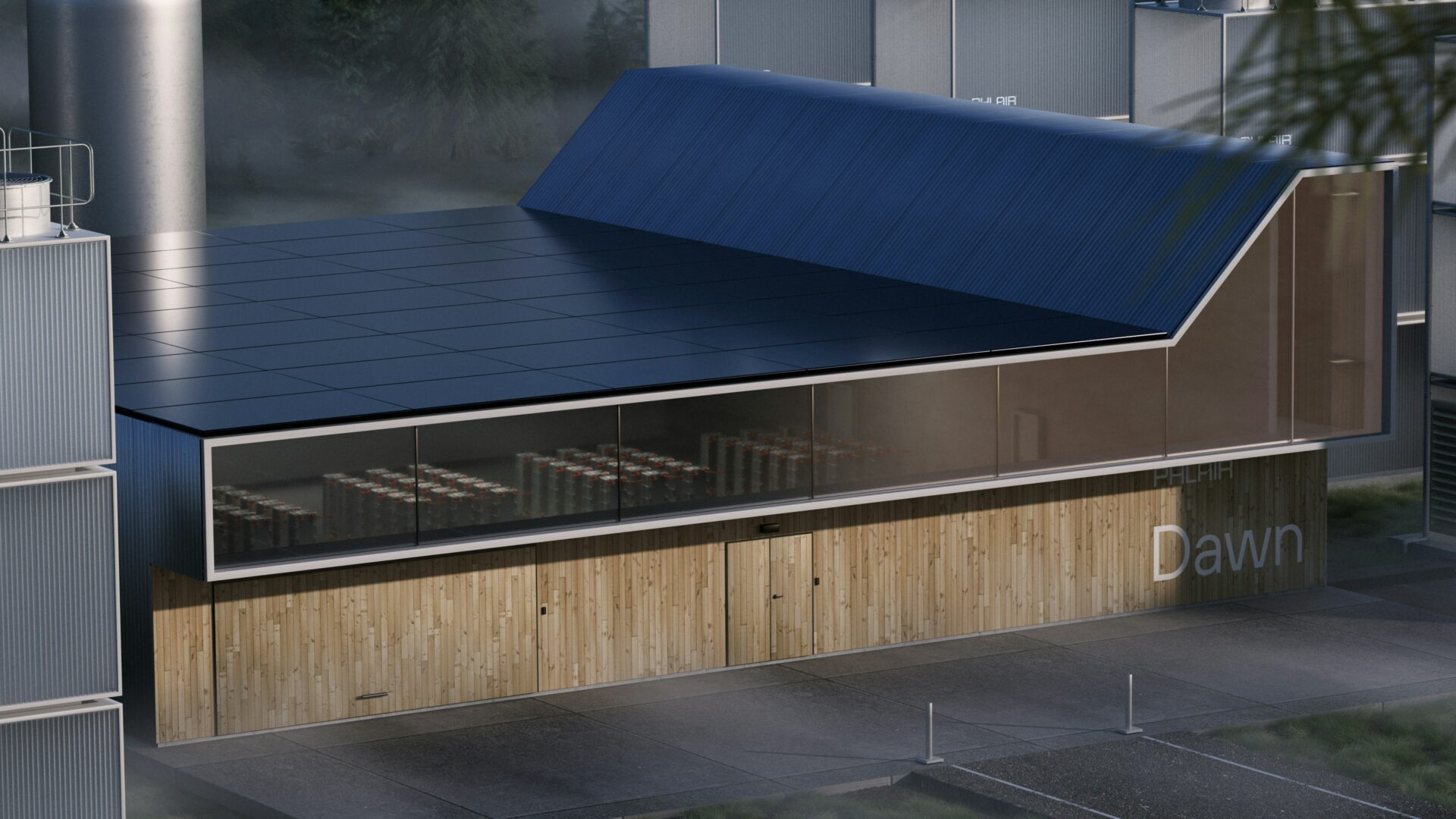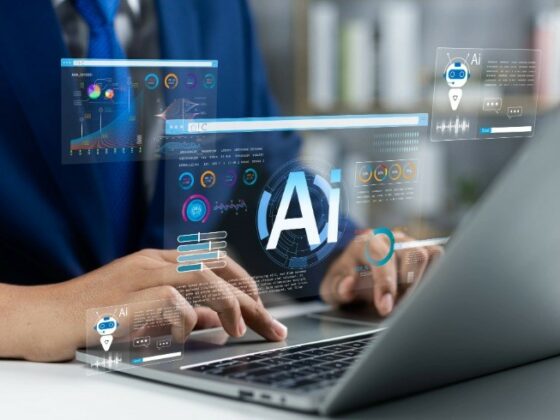Thirty years of ambitious targets. One disappointing truth: carbon capture was supposed to save us by now, and we have only managed to reach 50 million tonnes of global CO2 storage per year with where we needed to be at 1 billion tonnes by 2030.
As CCUS projects continue to face delays and climate change continues to accelerate, the technology that was supposed to be our salvation is desperately racing against time. CCUS technology is one of the most promising runners in this race, but there’s still a lot to catch up on.
In this article, we will break down the phenomenon of CCUS, define the carbon capture processes, understand what happens after capture, and see the role carbon tracking plays. We will also try to answer a question: Is CCUS a promising technology? Let’s start by defining it.
What is CCUS (carbon capture, utilisation, and storage)?
Carbon capture, utilization, and storage (CCUS) is a form of technology that captures CO2 emissions from industrial sources and power plants or directly from the atmosphere.
According to the EU Science Hub, at the EU level, 30% of CO2 emissions come from fossil-fuel combustion in power generation and energy-intensive industries, such as cement and steel. The process consists of three parts: the capture of CO2 from the source, transporting it to a storage site via pipelines or ships, and permanently storing it below ground or utilizing it to create another product.
The history of carbon capture goes back to the 1920s, and now, around the globe, the International Energy Agency reports that CCUS capacity has grown to just over 50 Mt of operational capacity as of 2025, with the expectation of growing to 430 Mt by 2030. However, developers are now also focusing more on advancing existing projects, with 60% of the pipeline in advanced development stages blocked.
Difference between CCS and CCU
Within the wider framework of CCUS’s emissions reduction technology, there are two separate approaches – CCS and CCU. They differ in some notable aspects:
- Goal. CCS permanently stores CO2 underground to stop emissions, with cleanenergywire.org noting it’s “essential for achieving climate goals, particularly for limiting global warming to 1.5°C or 2°C.” CCU turns captured CO2 into useful products, with CO2 Value Europe stating it will reduce EU emissions by 250Mt by 2050.
- Challenges. CCS needs suitable underground storage sites – IOGP Europe shows projects like Norway’s Smeaheia (5 Mtpa planned 2028) require specific porous rock with impermeable caps above. CCU faces high conversion costs, with projects like 4AirCRAFT (completed 2024) demonstrating synthetic kerosene production but requiring significant energy input.
- Project types. CCS targets heavy industry – examples include Belgium’s ArcelorMittal (0.125 Mtpa, operational since 2022) and Germany’s Cemex cement plant (0.146 Mtpa, planned for 2026). CCU covers diverse sectors: aviation fuels (4AirCRAFT), building materials (Spain’s AGGREGACO2), and chemicals (France’s ABACUS algae project, completed 2020).
- Carbon uses. CCS utilizes old oil/gas fields (like Croatia’s CO2 EOR project, running since 2014) as well as saline formations (Denmark’s Greensand, with a claim of .4 Mtpa by 2025). CCU uses different conversions: catalytically (4AirCRAFT for jet fuel), biologically (ABACUS algae-to-chemicals), or mineralisation (AGGREGACO2 for carbon-negative concrete).
- Impact on timelines. CCS allows for immediate permanent removal, i.e., Iceland’s Orca facility (0.004 Mtpa, operational), which is permanently storing underground CO2. CCU allows for temporary storage, in that most products will re-release the CO2, with the exception of the mineralized building materials, which CO2 Value Europe claims is permanently stores 8% of the overall carbon that is captured.
- Current scale. CCS has scaled up to sizeable operational projects (Norway’s Sleipner (1 Mtpa since 1996) and Longship (1.5 Mtpa, 2024). CCU remains at a modest scale, with most of the relevant projects having demonstrated proof-of-concept or pilot phase, with CO2 Value Europe projecting some 173Mt of utilization by 2050.
- Business model. CCS cannot make money from enhanced CO2 storage; thus, it needs government support from carbon capture public companies, such as the UK’s Net Zero Teesside (with 2 Mtpa in 2027), which is advancing under a “policy backing” only. CCU can sell products for profit, i.e., CO2 Value Europe indicates about 50% of utilization will become transport fuels and 42% chemicals, thus building market value.
With these differences in place, CCUS projects influence varied industries altogether. One of the most important ones is done for the airline industry.
How does CCUS impact the airline industry?
Aviation is coming under increasing pressure to decarbonize. The International Energy Agency reported that aviation accounted for 2.5% of global energy-related CO2 emissions in 2023, almost 950 Mt CO2, as travel demand rebounded to almost 90% of pre-pandemic levels. If the ICAO forecasts hold true, the European Commission adds that emissions from aviation could triple by 2050 compared to 2015 levels. To respond to growing sustainable travel trends, potential CCUS technologies provide a number of pathways for the aviation industry to reach its net-zero commitment.
Noteworthy benefits of carbon capture and storage for aviation:
- Sustainable aviation fuel. CCUS is enabling the production of synthetic fuels for aviation. Projects, such as 4AirCRAFT, have showcased the potential of producing synthetic aviation fuels, specifically kerosene. This would provide airlines with alternatives to fossil-based fuels.
- Cost-competitive CCUS infrastructure. Initiatives, such as CO2 Hub in Zeebrugge, Belgium (planned for 20 Mtpa capture capacity by 2030), leverage shared infrastructure for carbon management strategies that airlines may be able to access.
- Carbon offsetting. According to IATA, CCUS technology has the potential to capture 90% of carbon dioxide emissions from industrial processes. Direct Air Capture, a CCUS technology, can offer a way to remove carbon dioxide permanently, which meets aviation’s additionality and permanent requirement for emission reductions.
- Assist with regulatory compliance. Airlines are currently bound to adhere to the EU Emissions Trading System (ETS), whose full auctioning of allowances will increase by 2026. Credits that are derived from CCUS offerings may be beneficial compliance instruments.
In its report, the IPCC recognizes that “CCUS will be critical to limit global warming to 1.5°C” and that the target “cannot be met” without the use of such technologies. The International Energy Agency (IEA) calculates that CCUS could reduce global CO2 emissions by as much as 19%.

In terms of aviation, IATA states that CCUS, coupled with renewable biomass, could operate in “carbon-negative” mode, actually removing CO2 from the atmosphere while producing sustainable aviation fuels and making it essential to achieve net-zero ambitions.
How do carbon capture technologies work?
Point source carbon capture involves capturing CO2 emissions at their source, usually at industrial sources of energy generation, such as power plants or cement plants, or that create large quantities of CO2 (such as carbon capture for cars that produce 81% of non-industrial emissions) before the CO2 is released into the air. To understand how capture works, let’s break it into several types and describe each one with its goals, benefits, and real projects.
Post-combustion capture
Post-combustion CO2 utilization technology captures carbon dioxide from flue gases after the combustion of fossil fuels, with chemical solvents (generally amine-based solutions or carbon capture fertilizers, like those offered by the Fertilizers Europe project). This approach allows components to be replaced without impacting the operations of the power plant. Furthermore, the phased introduction of this technology facilitates a reduction in operational disruption and investment risk, as the post-combustion CCUS value chain applies to pre-existing plants.
Europe’s first fully operational post-combustion carbon capture plant is the Eni Casalborsetti natural gas treatment plant near Ravenna, Italy, shows the technology’s capabilities while utilizing Mitsubishi Heavy Industries’ KM CDR Process™ to capture around 25,000 tonnes of CO2 per year. The facility has an impressive 90% CO2 reduction rate, with peaks of 96% efficiency, before transporting captured CO2 via reconverted gas pipelines to a depleted offshore gas field for permanent storage.
The technology is viable for decarbonizing existing industrial infrastructure worldwide using advanced solvent technologies such as, but not limited to, the KS-21™ system, with 18 commercial plants already deployed.
Pre-combustion capture
Pre-combustion capture technology (PCC) targets the CO2 in synthetic gas (syngas) prior to combustion. This CCUS technology uses acid gas removal technologies, which have been used across many industrial sectors for decades. The Global CCS Institute describes PCC as working under pressure (> 40 bar, for example), the increased pressure allows the use of physical solvents like Selexol to promote CO2 regeneration in a flash drum, while also reducing the power requirement for the absorption system.
The process itself involves converting syngas to hydrogen and CO2 through one or more water-gas shift reactions before separating the CO2 using chemical or physical absorbents, which dissolve acid gases, achieving CO2 removal rates of >90% in practice.
Applications for the technology are found in natural gas processing, hydrogen production, and coal gasification, with its commercially mature distilable gas separation technology. The DECARBit CCUS project of the European Commission aims to reduce the price of PCC to 15 euros per captured ton. Axens states that for processes with high-pressure syngas treatment (15-20% CO2 at 20-30 bar), physical solvents become the best option for investing in carbon capture technology in industrial applications, such as fertilizer producers and refineries.
Oxyfuel combustion
Oxy-fuel combustion involves burning air that has been stripped of nitrogen and argon to produce high concentrations of oxygen that combust with fuel (coal or natural gas) in the combustor, producing steam and CO2 for gas turbine efficiency and power generation.
According to the technology study by Southwest Research Institute, scrubbed CO2 is taken in a power plant, with a capture rate above 90% and with the CO2 being used again, as it can be used in refrigeration manufacturing, carbonation of drinks, or oil and gas applications. In particular, there are advantages of carbon capture for the use of traditional fuels, such as coal, which is typically considered a high-emission fuel. Oxy-fuel conditions allow coal to burn cleaner and at the same time maintaining the abundant feedstock.
The Callide Oxyfuel Project at Callide A Power Station achieved more than 10,000 hours of oxy-combustion and 5,000 hours of carbon uses. Southwest Research Institute continues to research direct-fired supercritical CO2 (sCO2) power cycles, by combining sCO2 technology with oxy-combustion, and is able to achieve nearly 100% CO2 capture efficiency. It also partnered with the U.S. Department of Energy in the development of megawatt-scale demonstration equipment for power plant carbon capture.
Digital solutions for CCUS
Digital technologies are removing cost barriers that have previously limited CO2 utilization technology adoption. In remarks made by Prateek Bumb, co-founder and CTO of Carbon Clean, capture rates can “substantially exceed” 90-95%, but cost has historically been a barrier to adoption as “the operating costs for large conventional plants with high columns are difficult to justify for many emitters, especially small-to-mid-size companies.”
Advanced digital technologies have the potential to be used to reduce the carbon capture costs through optimization and prediction.
- Integrated management platforms that visualize the entire CCUS value chain and enable CO2 supply-demand matching, e.g., Mitsubishi’s CO2NNEX® we mentioned.
- Digital twins for monitoring CO2 pipeline flows in real time and optimizing energy consumption in power systems.
- AI and machine learning, with anomaly detection, predictive maintenance, and process optimization that match theoretical operating conditions with operational realities.
- Process control systems for carbon capture equipment, e.g., AspenTech’s Aspen solution that we described above.
- Advanced simulation tools, such as SLB’s Intersect simulator, for improved subsurface modeling and characterization of CO2 storage sites.
Now that we have sorted out the carbon capture methods, let’s focus on the next steps that are equally important.
Utilization and storage: What happens after capture?
Capture, as complex as it is, is just the first step of CCUS. CO2 utilization technology is extremely diverse and important as well. Let’s now understand what happens after carbon has been captured.
Carbon utilization strategies: fuels, building materials, chemicals
Following CO2 capture, there are several main pathways for carbon utilization. The main idea remains the same, however, to transform captured carbon into useful products. These pathways generalize over 25 other ways, which could represent substantial carbon capture and sequestration market opportunities by 2040.
- Utilization of fuels and chemicals.
For chemical processes, CO2 is utilized via reaction with hydrogen to produce fuels and chemicals. According to the Planete Energies group, the chemical sector currently uses:
- 100 million tons of CO2/year for producing fertilizers based on urea.
- 130-280 Mt CO2/year for e-methanol, one of the few commercially viable products, as demonstrated by plant developments such as Topsoe’s facility in Spain, which produces 40,000 tons annually of e-methanol and captures 56,000 tons of CO2.
- E-kerosene for aviation presents a great market for carbon uses, estimated to be between 50-150 Mt CO2/year, but without regulatory incentives, its adoption is slow..
Both e-methanol and e-kerosene share the opportunity to establish biogenic CO2 scarcity constraints, while they both provide closed carbon cycles that only emit the amount of CO2 they captured to produce the fuels.
- Construction applications.
Construction materials have the greatest CO2 utilization potential, with construction aggregates capable of utilizing 0.5-2 Gt CO2/year, according to extensive research. However, low product value makes economic competitiveness questionable.
- CO2-cured concrete is a smaller option of carbon reduction technologies, but has stronger revenue potential (40-70 Mt CO2/year), and the technology is nearly ready for commercialization (as shown by the Carbon Upcycling projects).
- Materials systems such as CarboPac-C from Bright Renewables are also examining how to capture CO2 from flue gas to produce either liquid or gaseous CO2 for construction applications.
The construction utilization pathway represents a market opportunity value of $400 billion with the potential to reduce CO2 emissions by as much as 3 Gt/year by 2030.
- Biological utilization with microalgae and cyanobacteria.
Biological utilization is based on photosynthetically functioning organisms using large amounts of CO2 to support growth. The cultivation of microalgae has achieved commercial maturity for producing high-value products, including pigments and omega-3 fatty acids.
Green algae contain 50-70% protein on a dry weight basis, providing opportunities for the peri-urban agriculture application of animal feed with reduced land allocation. Commercial viability has already been established with the production of astaxanthin. The pathway for microalgal-to-ethanol conversion demonstrated that cyanobacteria were more readily genetically manipulated than green algae.
Engineered cyanobacterial strains have been developed to produce ethanol, fatty acids (which can be consumed by animals), 2,3-butanediol, and other chemicals, although a majority of commercially relevant products are still not yet economically viable.
Carbon storage solutions: geological formations, saline aquifers
After CO2 capture, permanent geological storage is the next most effective long-term climate change mitigation option on an economical scale. Deep saline aquifers and geological formations represent substantial geological storage potential through proven methods, with commercial viability demonstrated in numerous deployment examples.
- Deep saline aquifers.
According to research published on MDPI, deep saline aquifers have the greatest estimated storage capacity, ranging from 400 to upwards of 10,000 gigatonnes of CO2. Underground saline aquifers can provide all the conditions for permanent CO2 storage through pressure increase, structural, residual, solubility, and mineral trapping. Pioneering CO2 storage in deep saline aquifers provides commercial feasibility examples such as Australia’s Gorgon project, at up to 4 million tonnes per year in the Dupuy saline formation.
- Geological formations.
Depleted oil and natural gas reservoirs offer the advantage among other carbon capture materials as they provide a proven storage with existing natural infrastructure.
- CO2-Enhanced Oil Recovery (CO2-EOR) captures value from two sources: injecting 300-600 kg of CO2 per recovered barrel of oil, and it achieves permanent storage for the majority of injected CO2 underground.
- Carbon Storage with Enhanced Gas Recovery (CSEGR) in depleted natural gas fields allows for the permanent storage of CO2 while capturing remaining natural gas resources potential with negligible possibility of leakage, because the depleted natural gas fields and overlying geology have proven containment capabilities.
In regard to the technical basis, if site selection and management protocols follow the IPCC assessments of geological storage, the majority of the CO2 can be retained for longer than 1,000 years with a 99% or better certainty for permanent retention.
Risk management and monitoring of stored CO₂
Risk management is essential to the safe geological storage of CO2 and must be continuously monitored for the duration of the life of the project. The European Commission CCS Directive states that effective storage requires permanent containment, and associated health and environmental risks of any CCUS technology should be as low as reasonably practical.
It defines the following considerations for risk management and monitoring:
- Risk assessment should be based on site-specific risk screening that uses likelihood categories and consequence rating criteria for human and environmental health.
- The hazard identification approach should identify all potential hazards associated with CO2 leakage pathways, formation fluid displacement, and induced seismicity.
- A risk management monitoring program should be organized, documented, and related to the project-specific risks as effectively as possible within budget.
- A typical commercial project (≥1 Mt CO2/year) should have an annual monitoring budget of US$1-4 million, which is based on <5% total project costs (IEA Technology Collaboration Programme).
- A monitoring approach should adopt a mix of monitoring technologies capable of detecting any leakage or assessing CO2 migration, and ensuring regulatory compliance.
Current operational projects showcase a strong level of faith in the monitoring technologies currently available, with better efficiency achieved by incorporating risk-based methods. Carbon offset companies like Terrapas and CarbonClick facilitate the commercial viability and cost-efficiency pros of carbon capture, allowing the sale of carbon credits for tax reduction and showcasing sustainability initiatives. None of this would be possible without carbon tracking.
How does carbon tracking enhance CCUS performance?
To see how carbon tracking approaches enhance carbon utilization and capture, let’s review how each specific type of technology influences the development of this industry.
- Emissions calculators.
Emissions calculators are necessary tools for measuring carbon footprints using internationally accepted methodologies. They enable businesses to accurately measure carbon footprint of their travel with a data-driven approach and provide a solid foundation for sustainable decision-making and identifying improvements. This, in turn, allows organisations to set realistic emissions reduction targets and build cultures of sustainability within their organisations. Apart from assisting businesses with green initiatives, personal carbon capture devices like CarbinX help use the converted carbon into energy for residential buildings.
- Dashboards with real-time CO2 analytics.
Real-time CO2 analytics dashboards and carbon reporting software, such as those offered through StormGeo and Sievo CO2 provide better access to carbon emissions data and insight. These dashboards bring together the organization’s CO2 emission data and metrics, give a complete overview of the organization’s environmental impacts, and provide more visibility by mapping the spent data with emission data. The dashboards allow users to create customized reports that allow unlimited collaboration, while the totals are being updated in real-time.
- Carbon emission budgeting.
Carbon emission budgeting involves creating measurable emission targets that are specific to an organization’s sustainability goals. When used effectively, it can develop a framework for decreasing environmental impact while incorporating and utilizing sustainable travel practices. Ultimately, organizations are perceiving carbon emissions budgeting as an investment towards future business continuity, allowing them to maintain a place on the leading edge of responsible environmental activity.
- Emissions visibility while flight shopping.
Transparency while booking flights creates awareness of the emissions associated with flights and other travel options. When carbon footprints are shown next to every flight option, it allows travelers to make informed decisions about their travel choices consistent with environmentally friendly or sustainable practices. In addition, selecting airlines with robust sustainability credentials (like Wizz Air and Air France-KLM) that use airline digital solutions reinforces responsible travel practices and supports business travel that has less impact on the planet.
- Individual emissions visibility.
Individual emissions tracking displays a detailed breakdown of personal travel selections and the carbon emissions related to those selections. Armed with this level of detail, people can figure out exactly what they can change in that travel selection to lower their environmental impact. Acting on emission visibility accomplishes two things: One, it allows individuals to act on that visible impact, and, more importantly, it creates awareness and a corresponding shift in collective action within an organization.
- Environmental initiatives and carbon offsetting.
Investing in high-quality carbon credits offsets unavoidable emissions and gets you certified greenhouse gas reductions through a project-based certification system. Contributing to global research and development projects that focus on environmental protection can establish a global positive ripple effect. This is more than just carbon offsets – this is about supporting organizations that model and promote corporate responsibility and community development.
Technology and modern approaches help support CCUS projects and the related benefits they bring.
What is their role in CCUS?
Transportation causes nearly 20% of global CO2 emissions (out of 36.7 billion tons globally; Ritchie, Science Direct). As such, there is significant potential for reductions in carbon emissions in this sector to fit into the context of carbon capture, utilization.
Carbon tracking applications help identify emissions sources, calculate the associated emissions impact, and provide a basis for behavioural change to intentionally reduce the total carbon to capture and store.
In fact, research suggests that by using carbon footprint tracking apps, emissions could be reduced by as much as 23% through continuous feedback (Hoffmann et al., Science Direct). However, the relative impact will vary – mobility reported a 12% reduction, and household activities had up to a 35% reduction.
The evidence of success is real, particularly concerning tourism in Ireland. The Fáilte Ireland Carbon Calculator has involved over 500 businesses to measure and collectively reduce emissions, which shows how tracking technologies can provide a means of bridging the information gap for sustainable decision-making.
Best carbon tracking tools
To reduce their carbon footprint, companies and individuals can use carbon tracking tools that allow them to easily monitor daily emissions. Let’s review the top carbon capture technologies you can use.
- Klima’s climate app calculates 100% of your daily CO₂ emissions in less than three minutes, with real-time observing and tracking options. It provides suggestions to help you take action on food, transport, and lifestyle behaviours to minimize your environmental footprint. It’s solely a personal tool for users interested in monitoring their carbon footprint quickly, in a concise way.
- Myclimate is a Swiss-based calculator that offers official offset projects and calculates CO2 emissions per passenger mile on an exact flight distance. The application provides flight, vehicles, and all types of lifestyle emissions with annual estimates based on behaviour. Very useful for a traveller for precise flight calculations, and with proven climate protection projects.
- CoolClimate was developed by carbon footprint professionals. This calculator considers total emissions from all transportation, energy, food, and services, using consumption-based methods. The CoolClimate Team created a personalized climate action plan, and it allows users to compare progress with other users. It’s the most valuable one for users or companies that need complex research-supported emissions analysis.
- Carbonfootprint.com is a widely used free online calculator used to estimate carbon uses and emissions for buildings, automobiles, flights, and other areas of carbon emission. Users can input details for up to 3 flight legs with detailed tracking capabilities. It is a good option for people or businesses looking for simple, easy emission calculations across several categories.
- Commons (formerly Joro) automatically analyzes purchasing. The tool calculates carbon footprints and purchasing footprints with more than 300 spending categories, including travel expenses. Users receive suggestions for sustainable alternatives and a monthly overview of emissions reductions. It is ideal for individuals and small businesses looking to understand their complete consumption-based carbon impact.
- TravelPerk’s GreenPerk business travel platform measures, tracks, and offsets corporate travel emissions in real-time. Companies can reduce their CO₂ footprint by supporting VERRA-certified offset projects for less than 1% of their total travel cost. Best suited for enterprises looking for comprehensive travel emissions management, including transparent net-zero reporting capabilities.
- The Greenly business platform begins with simple, free carbon calculators and then offers full tracking, forecasting, and decarbonization planning services. It also allows multiple users, including employee training in support of organization-wide sustainability plans. It is intended for businesses with full-scale carbon management needs and industry support with professional expertise in these areas.
Carbon capture on cars remains one of the most important solutions for lowering the global footprint. If an off-the-shelf tool cannot cover the needs of your business, our company can build a web or mobile solution to cover your CO2 calculation and reporting needs.
At COAX, we are committed to creating sustainability-aimed digital products, taking into account the environmental footprint of the technologies we implement. One of the products we are proud of is Driven Connect’s CO2 tracking module, providing carbon emissions reporting. Using sophisticated algorithms, it calculates emissions based on the engine type and provides real-time reports that can be provided for tax submission and offsetting. This approach shows our ability to use technology to make CCUS technology technically and financially viable.
The future of CCUS in climate strategy
The UK government’s CCUS investor roadmap establishes its national commitment to CCUS development, which advises the establishment of four CCUS low-carbon industrial clusters that are expected to capture between 20-30MtCO2 per year by 2030. The UK is now in a unique position in that the estimated 78Gt of CO2 storage potential in the UK Continental Shelf will potentially provide one of the largest and most available CO2 storage capacities in Europe.
Also, the Intergovernmental Panel on Climate Change (IPCC) report confirms CCUS technology can support global climate aims such as the 1.5°C warming targets and must go hand-in-hand with rapid emission reductions to be able to achieve net-zero emissions. It’s particularly important for hard-to-abate sectors like cement, where CCUS will be “essential to avoid emissions from the limestone calcination process.”
Integration with hydrogen production and DAC (Direct Air Capture)
The combination of CCUS technology and hydrogen production brings one step closer to net-zero emissions through applications like “blue hydrogen” using natural gas reforming. Hongfang Lu outlined this pathway in a paper, “Hydrogen production in integration with CCUS,” published in Science Direct. This pathway provides immediate access to clean hydrogen while using current industrial infrastructure and expertise. Here is the possible workflow and results:
- Capture integration. Carbon dioxide (CO2) capture is directly integrated into grey hydrogen production processes using absorption, adsorption, and DAC; it is estimated that current technology has a 10-20% increased energy demand relative to the grey hydrogen production chain.
- Economic optimization. Large-scale implementation gives CCUS companies the ability to achieve cost reductions of approximately 30-40% over smaller installations. Blue hydrogen production could be achieved for 1.2-2.1 USD/kg, assuming natural gas prices are in the range of 1.4-6.3 USD/GJ.
- Infrastructure development. The required shared transport and storage infrastructure is allowed by the regional clustering of hydrogen production, storage, and transport. With projects like Northern Lights, infrastructure development reduces the costs for each hydrogen project.
- Catalyst performance. Investing in the development of high-performance catalysts, higher selectivity, and improved resistance to carbon deposition and materials sintering. Especially, alkali metals provide improved catalytic performance.
- Policy support. Implementation will need government policies that include carbon taxes, market incentives, and industry engagement models that capture, transport, utilize, and store projects and development.
Apart from hydrogen production, direct air capture is another useful complementary technology to point-source CO2 capture because it removes atmospheric CO2 directly. Specialized DAC technology exists that is also capable of integrating with facilities with low-concentration CO2 waste emissions, lessening the boundary condition for mass and thermal transport.
- Use of a contactor system designed for CO2 adsorption-desorption using solid-amine materials for atmospheric CO2 capture.
- Use of waste heat and recoverable energy from co-located industrial facilities to lower operational costs
- Integration of low-concentration CO2 streams from industrial vents to improve the efficiency of the overall system.
- Creation of commercial systems based on actual field-testing data, for use internationally.
- Production of concentrated (>99%) CO2 that is suitable for either utilization or storage.
The DAC RECO2UP project, finalized in July 2024, shows how technology enhances the advantages of carbon capture storage. As the first direct air capture system, the project conducted five testing campaigns and over 3,300 operational hours. The project demonstrated a reduction in the cost required to capture CO2, produced concentrated CO2 streams with a purity of >99%, and achieved more than what was originally requested. The project also verified that DAC technology has commercial promise around cost.
Innovation trends and emerging technologies
The CCUS industry is at a turning point as the world moves toward net-zero emissions targets. After demonstrating technological feasibility, the sector has large hurdles remaining in order to scale up to the immense deployment needs for global decarbonization.
Some innovative trends help move this industry forward:
- AI is changing the game with respect to finding suitable CCUS storage sites. It can quickly analyze potential aquifers and adjacent geological features, identifying site potential rapidly. AI can ‘see’ the presence of faults and honeycombed fractures much more clearly than traditional methods. Using an AI model, location screening of storage sites can happen rapidly before any excavation, and to understand whether there is trap and seal integrity in the site.
-
The hub & network model
of creating larger CCUS hubs and networks has led from isolated projects to integrated systems of infrastructure that support multiple emitters from different industrial sectors. - Standardization helps as the sector is approaching a shift from customized processes and CCUS equipment being designed for a specific site, to standardized equipment and mass manufacture as a low-cost option that speeds up deployment.
- Cross-sectoral integration, or the delivery of CO₂ from gas processing to the hard-to-evade sectors of cement, steel, chemicals, fertilizers, and waste.
- Shared-infrastructure development causes regional economic and industrial clusters to facilitate multiple emitters utilizing shared CO₂ transport and storage infrastructure.
- Advanced business structures make risk management more attractive for private investment, developing market acceptance for CCUS projects to set commercial viability.
- Improved storage technology helps drive geological storage technology to deliver the massive amounts of CO₂ in the net-zero scenarios.
The main problems with carbon capture and storage are high costs, regulatory ambiguities, and bespoke manufacturing models that limit scale. However, some emerging trends are promising, such as more robust policy instruments, particularly the reformed EU’s Emissions Trading System and the Clean Industrial Deal.
With the industry finally getting governmental support (and stricter regulations as well), having reliable new technology on board is a must. COAX engineers can assist you with is, providing AI development services that integrate the machine learning models and pipelines to process and interpret your environmental data for fast and easy reporting and monitoring your carbon footprint.












































